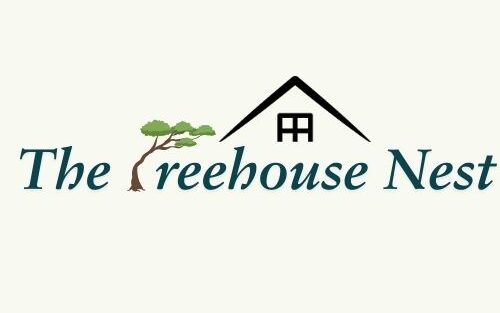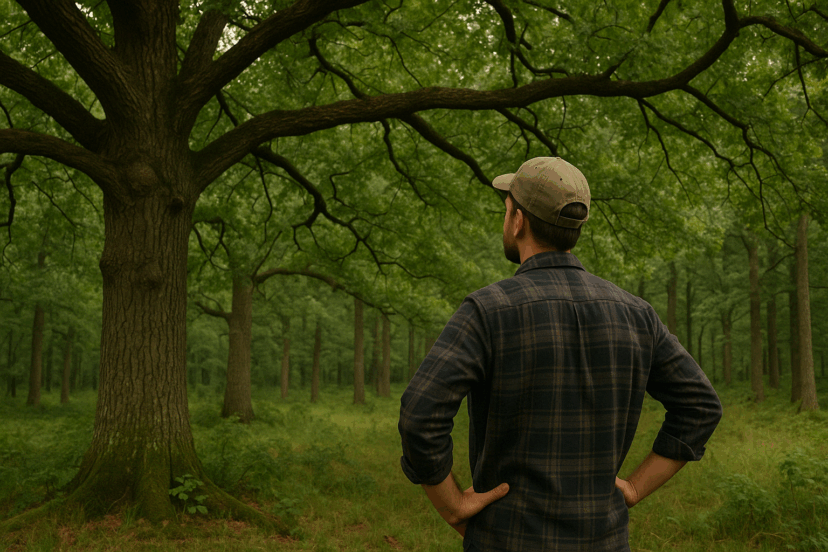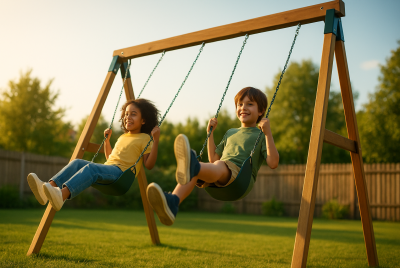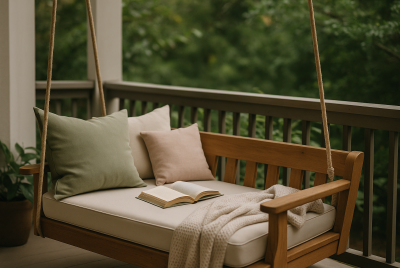10 Best Trees for Building Your Dream Treehouse
We may earn a commission for purchases made using our links. Please see our disclosure to learn more.
When you’re planning to build your dream treehouse, the journey starts with one essential decision: choosing the right tree. This isn’t just about picking a pretty tree with wide branches. It’s about strength, longevity, and harmony with nature. Whether you’re a minimalist looking for a quiet escape or a die-hard treehouse enthusiast dreaming of a multi-level haven, your tree will literally and figuratively hold everything together.
Let’s explore the top trees known for supporting elevated builds and what science says about selecting the perfect living foundation.
Why the Right Tree Matters
A treehouse is more than a childhood fort—it’s a structure that must endure weather, support weight, and keep its natural host healthy. That’s why tree selection is critical. The wrong tree can compromise the safety of your structure, while the right one becomes a lifelong partner in your outdoor retreat.
You need a tree that’s mature, healthy, and rooted in stable soil. Ideally, it should have a trunk wide enough for anchoring support beams and limbs spaced well for balanced weight distribution.
1. Oak Trees – The Classic Powerhouse
Why it’s great: Oak trees are known for their incredibly dense hardwood and longevity. Their wide, thick branches offer unmatched support.
Best for: Large or multi-room treehouses
Tip: White oak resists rot better than red oak, making it a better long-term investment.
2. Maple Trees – Beauty Meets Strength
Maples bring the perfect mix of structural stability and vibrant foliage. They offer a dense canopy, adding shade and privacy.
Best for: Cozy, shaded hideaways
Pro tip: Sugar maples are particularly durable and well-suited for supporting builds.
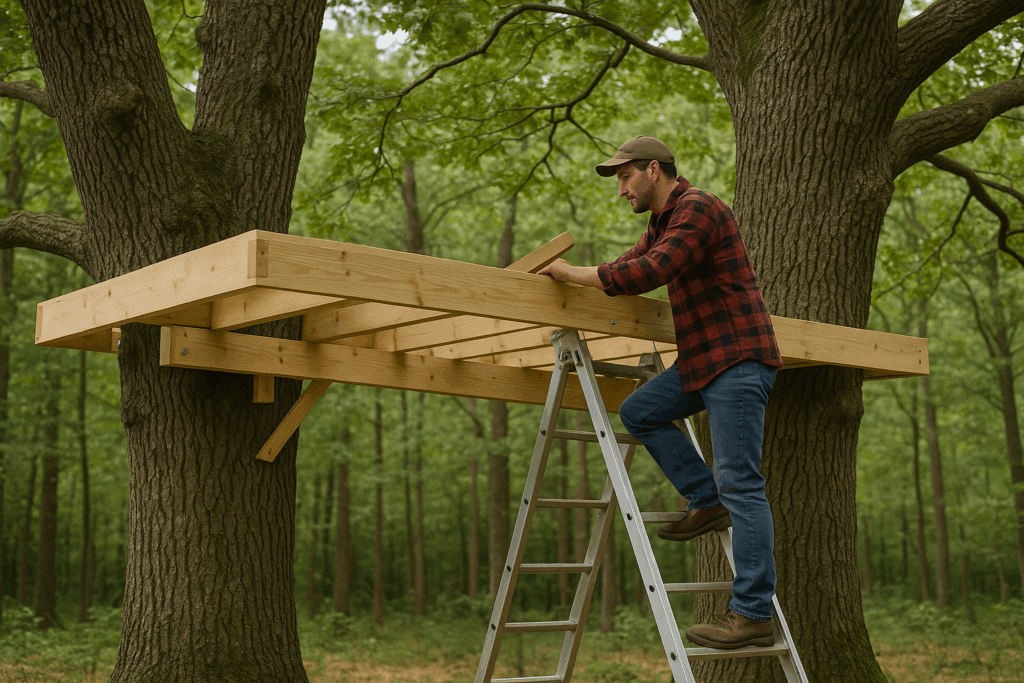
3. Douglas Fir – The Evergreen Champion
Tall, straight, and strong, Douglas firs are ideal for platforms built higher off the ground. They’re common in forests and hold up well in varying climates.
Best for: High-elevation or minimalist treehouses
Bonus: They offer excellent wind resistance and minimal lower limb clutter.
4. Beech Trees – Smooth Bark, Solid Choice
Beech trees are both sturdy and beautiful, with wide trunks and a smooth bark that deters pests. They also provide excellent support for mid-size structures.
Best for: Platform-based designs or mid-size builds
Watch out: Be sure to space attachments properly due to their unique bark texture.
5. Hemlock – Ideal for Smaller Builds
Eastern hemlocks work great for simpler builds. While not as massive as oaks, their limbs are strong enough for modest projects.
Best for: Observation decks or single-room retreats
Note: Make sure your structure is lightweight and evenly distributed.
6. Cedar Trees – Naturally Resistant to Decay
Cedar trees are a favorite for their natural resistance to rot and insects. Plus, they smell great and blend beautifully into forested surroundings.
Best for: Wet or humid environments
Pro tip: Western red cedar is especially resilient and treehouse-friendly.
7. Sycamore – Strong, Spreading Branches
Sycamores offer wide limbs that grow outward, creating natural support points. Their bark also has a beautiful patchy pattern that adds a rustic touch.
Best for: Wide-platform or deck-style treehouses
Heads-up: They require lots of open space to reach maturity.
8. Hickory – Hard as Nails
If you want durability, hickory is your tree. It’s one of the hardest North American woods and provides incredible support.
Best for: Adventure-themed or climbing-focused treehouses
Warning: Some hickory trees can grow unevenly, so trunk alignment matters.
9. Walnut Trees – Sleek and Solid
Walnut trees grow with balanced symmetry, making them ideal for evenly weighted designs. They’re not super common, but they’re worth it.
Best for: Precision builds or symmetrical structures
Note: Be gentle with their roots—they’re sensitive and essential to the tree’s health.
10. Apple Trees – Whimsical and Winding
Mature apple trees may not support large builds, but they’re charming and perfect for smaller, storybook-style treehouses.
Best for: Light structures or children’s playhouses
Tip: Only use well-established trees with thick trunks and stable branches.
Research-Backed Tree Selection: What Science Says
When it comes to selecting the right tree, it’s not just about appearance—science has a say, too.
A comprehensive study on treehouse construction by V. Vacenovská (2020) stresses the importance of choosing species with the right balance of durability and flexibility. The research outlines how tree characteristics—like wood density, root health, and growth patterns—impact not only your build’s stability but the tree’s long-term health.
Building on that, a 2023 scientific framework published in MDPI offers a four-stage approach for integrating trees into building projects. While focused on urban development, it applies directly to treehouse design by emphasizing environmental compatibility, species resilience, and long-term site analysis.
These studies confirm a simple but powerful truth: building with trees requires respect for the tree’s biology. You’re not building on a tree—you’re building with it.
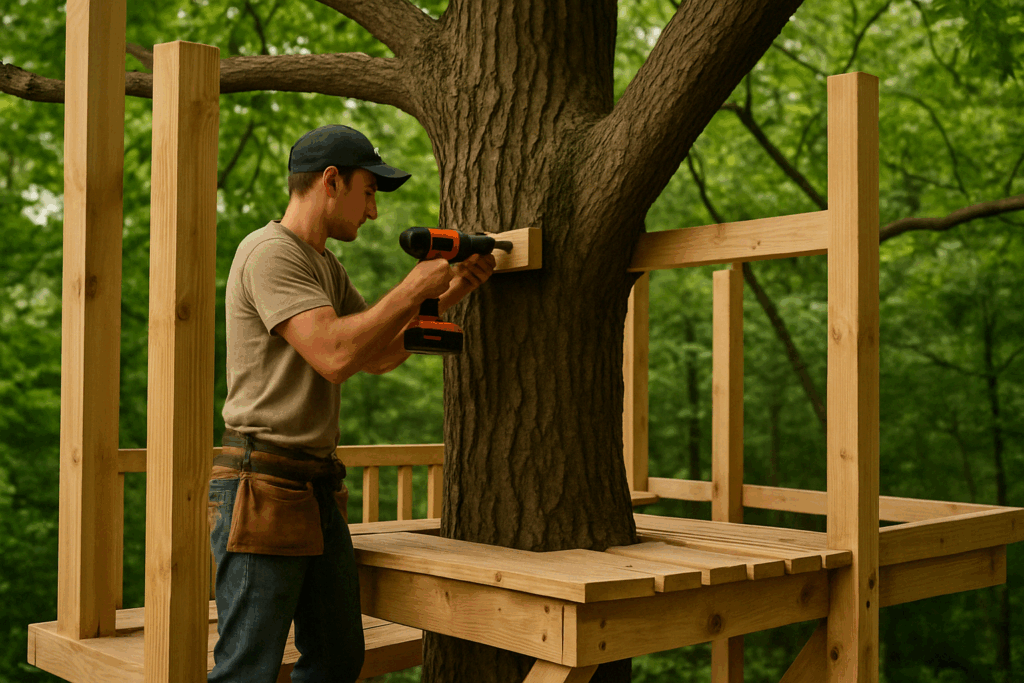
Product Recommendations: Build with Safety and Style
The right tools and materials can make your treehouse safer, more durable, and easier to build. Here’s what we recommend:
- Treehouse Attachment Bolts (TABs
Engineered for strength and flexibility, these bolts protect your tree and ensure secure anchoring. - Heavy-Duty Lag Screws
Great for structural stability, especially when attaching floor joists and support beams. - Eco-Friendly Wood Stain and Sealant Protects your materials from rot and weather without harming the tree or environment.
- Joist Hangers and Corner Brackets Adds reinforced stability, especially important in windy areas or multi-tree builds.
- Ratcheting Tie-Down Straps Ideal for holding beams in place during construction or transporting heavy materials.
- Treehouse Plans
Professional plans designed to work with different trees, terrains, and treehouse types.
Conclusion: Your Dream Treehouse Starts with the Right Tree
Your dream treehouse begins where all great things do—at the roots. Choosing a strong, healthy tree isn’t just a good idea—it’s the foundation for everything else. Whether you’re building a whimsical getaway or a sleek minimalist platform, the right tree transforms a good idea into something magical.
Use science, use the right tools, and most importantly—respect the tree. Let your imagination grow wild, but let your build be grounded in nature.
FAQs
1. Can I build a treehouse on any mature tree?
Not all mature trees are suitable. Look for strength, health, trunk size, and branch configuration before starting.
2. How do I know if my tree is healthy enough?
Check for dead branches, signs of decay, insect activity, and root exposure. Consulting an arborist is always a smart move.
3. Do I need permission to build a treehouse?
In some places, yes. Always check local zoning rules and neighborhood regulations before you start.
4. Are fruit trees like apple or pear okay for treehouses?
Only for light structures. These trees are not as structurally strong as hardwoods like oak or maple.
5. What essential tools should I have?
You’ll need a power drill, safety harness, ratcheting straps, spirit level, lag screws, and quality timber at the very least.
